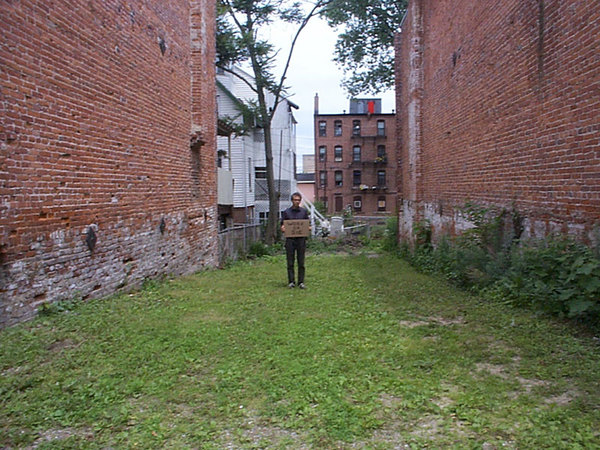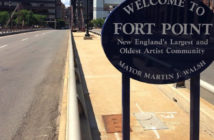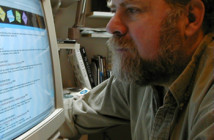Yet, without the Berwick, I have limited choices and freedom to continue my personal exploration of the arts. Since the Berwick’s activities have been downsized to only studio space and an Artist in Research Program, I’ve been reminded that most of Boston’s venues for the “other” categories of art (namely performance and sound) have slowly dwindled away. We originally founded the Berwick as a reaction to the limited venues open for varied mediums, but the usual suspects of the dying art space have stunted our contribution to the arts. Regardless of the City of Boston’s commitment to the new "Artists Live/Work Initiative," our artists are unable to “live” and “work” in Boston if the places that incubate their ideas have all been eradicated.
This dwindling of Boston’s underground art scene has been chronicled in publications such as the Boston Globe, the Phoenix and the Weekly Dig. Non-profits like Mobius, the Revolving Museum, and The Little White Box are all but gone while the Oni and Zeitgeist are fighting admirably against all odds. It is perplexing that other vital cities like New York, San Francisco and Chicago have the same troubles (funding, high occupancy and high rents) – yet their populations are able to support non-commercial art spaces. Granted, the newly renovated SOWA gallery district supports contemporary art. But where is the support for non-commercial art and the places where the new is commonplace – the things that haven’t been marketed yet?
City support doesn’t mean the sanctioning or financial aid of a specific gallery or performance space. What is needed is the basic support that allows an artist (including the performance population) to do what they do regardless of venue or public turnout. Boston is rich with production, dance, and theatre companies, as well as artist collaboratives – most of which are funded from the day jobs of individuals. As a result, those who are most prolific in the Boston art scene seem to leave after a few years looking for greener pastures.
The truth is that we can’t afford it here—we can’t afford to pay rent and fund our own projects. There are only a few agencies that fund artists who make work that is outside of the museum or educational context. The Massachusetts Cultural Council recently had their budget cut by more than half. Space is limited – our lofts have been taken over by short-lived startups and big city real estate agencies. Our public spaces are so closely governed by increasingly strict laws that something as harmless as a spontaneous happening or a public intervention can easily be misconstrued.
What’s worse is the fact that we are a fragmented community. One Berwick supporter recently commented to me that he was surprised that Boston’s artist community seemingly had deaf ears in regards to the recent demise. But many of the community’s defenders have been killed off by bad public policy and shady real estate deals. The community has been so pummeled that it is often hard to just show up.
Not too long ago, portions of Chinatown, South Boston, and Dudley Square (which are all now “revitalized by the arts”) offered bigger problems for the city and police. Now, a few hundred square feet of people participating in sound shows, performances and art shows seem to draw the attention of city officials. The districts where artists work have been sniffed out by commercially motivated civic developers and whole zip codes have been sterilized. Neighborhoods that were once diverse in race, commerce and culture are now large, shiny developments that ultimately will not be supported by the economy.
It is becoming increasingly less enjoyable to be an artist in Boston. I miss 84 Kingston, 10 Williams Street and the Fort Point community. I shy away at sounding like a gal who just wants to have fun, but I’m tired of my motivation being “If we don’t do it, no one will.” I would prefer to work because it brings me joy – not against all odds. We need to continue to support and make work that moves in between walls, rules, laws and capitalist structures because we want to. As people invested in the arts of the city, we need to take to the streets and preserve the things that benefit the culture of the city – the things that bring us joy.
We need nothing less than a vital and thoughtful revolution to continue doing the things that we do well. We need to realize the potential that Boston has to become a place where art and ideas can bring forth good times and progress. We need to realize our strengths – a huge youth population, countless intellectual institutions and a safe, beautiful city. We need look at “The Boston Problem” from a global point of view as well as one that is very local. We need to realize that we are bound by capitalism – it creates all of our public policies – and we need to move in and around that trap. But we also need unity. We need to show up at each other’s events. We need to collaborate in between artistic mediums. We need to use the city’s public spaces because that is all we have left. What we need now is the relaxed determination to enjoy our lives and invite others to enjoy them as well.
All images courtesy of Meg Rotzel & the Berwick Institute.




